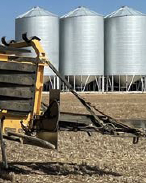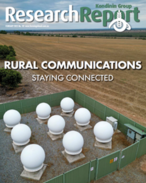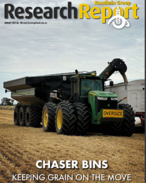A key source of collated scientific climate information is the sequence of Intergovernmental Panel on Climate Change (IPCC) assessment reports (See Box 3.1). The discussion below summarises the state of science as set out in the most recent IPCC Summary for policymakers.
Box 3.1: What is the IPCC? |
||
The IPCC is a scientific body established under the auspices of the United Nations in 1988. It reviews and assesses the most recent scientific, technical and socioeconomic information relevant to the understanding of climate change. It does not conduct any research or monitor climate-related data or parameters.Thousands of scientists from all over the world contribute voluntarily to the work of the panel. Review is an essential part of the IPCC process to ensure an objective and complete assessment of current information. The IPCC aims to reflect a range of views and expertise.The panel makes its findings available through a sequence of assessment reports. The latest is the Fifth assessment report (known as AR5). A summary of the first section of the report, Climate change 2013: the physical science basis, was published in November 2013.The IPCC is currently in its Sixth Assessment cycle, which will involve the production of new Assessment reports of its three working groups, three special reports, a refinement to the methodology report and the AR6 Synthesis report. The latter is the final step in the current cycle and is due in June 2022.
|
3.2.1 Observed changes in the climate system
According to the IPCC's Summary for policymakers, warming of the climate system is ‘unequivocal'. It says that the atmosphere and oceans have warmed, the amount of snow and ice has diminished, sea levels have risen and the concentration of greenhouse gases has increased. Moreover, since the 1950s, many of the observed changes are unprecedented over decades to millennia.
Atmosphere
The IPCC document states that each of the past three decades has been successively warmer at the Earth's surface than any preceding decade since 1850. In the Northern Hemisphere, the 30-year period between 1983 and 2012 was probably the warmest such period of the past 1400 years.
Other points worth noting include the following:
-
For the longest period for which the calculation of regional trends is sufficiently complete (1901-2012), almost the entire globe has experienced surface warming.
-
Changes in many extreme weather and climate events have been observed since about 1950. The IPCC concludes that it is ‘very likely' that the number of cold days and nights has decreased and the number of warm days and nights has increased on the global scale. It is likely that the frequency of heatwaves has increased in large parts of Europe, Asia and Australia.
Oceans
Ocean warming accounts for more than 90% of the extra energy accumulated in the climate system between 1971 and 2010. On the global scale, ocean warming is greatest near the surface. The IPCC notes that it is ‘virtually certain' that the upper ocean (0-700 metres) warmed during that period, storing more than 60% of the net energy increase in the climate system.
Cryosphere
Over the past two decades, the Greenland and Antarctic ice sheets have been losing mass, glaciers have continued to shrink almost worldwide, and Arctic sea ice and Northern Hemisphere spring snow cover have continued to decrease. Moreover, multiple lines of evidence support very substantial Arctic warming since the mid-twentieth century.
Sea level
With high confidence, the IPCC notes that the rate of sea-level rise since the midnineteenth century has been larger than the mean rate during the previous two millennia. Over the period between 1901 and 2010, global mean sea level rose by 0.19 metres. Glacier mass loss and ocean thermal expansion from warming since the early 1970s together explain about 75% of the observed global mean sea-level rise.
Carbon and other biogeochemical cycles
The atmospheric concentrations of CO2, methane, and nitrous oxide have increased to levels unprecedented in at least the past 800 000 years. The IPCC concludes that CO2 concentrations have increased by 40% since pre-industrial times, primarily from fossil fuel emissions and secondarily from net land-use change emissions.
3.2.2 Drivers of climate change
Natural and anthropogenic (human-produced) substances and processes that alter the Earth's energy budget are drivers of climate change. Radiative forcing is a measure of the change in energy fluxes caused by changes in those drivers for 2011 relative to 1750. Positive radiative forcing leads to surface warming, while negative radiative forcing leads to surface cooling.
According to the IPCC's report, net radiative forcing is positive and has led to a take-up of energy in the climate system. The largest contribution to total radiative forcing has been caused by the increase in the atmospheric concentration of CO2 since 1750.
3.2.3 Understanding the climate system and its recent changes
Human influence on the climate system is clear and evident from the increasing greenhouse gas concentrations in the atmosphere, positive radiative forcing, observed warming, and our understanding of the climate system.
Human influence has been detected in the warming of the atmosphere and the ocean, in changes in the global water cycle, in reductions in snow and ice, in global mean sealevel rise and in changes in some climatic extremes. The IPCC asserts that it is ‘extremely likely' that human influence has been the dominant cause of the observed warming since the mid-twentieth century.
3.2.4 Future global and regional climate change
Continued emissions of greenhouse gases are expected to cause further warming and changes in all components of the climate system. Limiting climate change will require substantial and sustained reductions of greenhouse gas emissions.
The IPCC suggests that most aspects of climate change will persist for many centuries even if emissions of CO2 are stopped. This represents a substantial multi-century climate change commitment created by past, present and future emissions of CO2.
A large fraction of anthropogenic (human-induced) climate change resulting from CO2 emissions is irreversible on a multi-century to millennial scale, unless there is a large net removal of CO2 from the atmosphere over a sustained period.
It is virtually certain that global mean sea-level rise will continue beyond 2100.
Explore the full Workshop Manual: The business case for carbon farming: improving your farm’s sustainability (January 2021)
Read the report
RESEARCH REPORTS
1. Introduction: background to the business case
This chapter lays out the basic background and groundwork of the manual
RESEARCH REPORTS
1.2 Being clear about the reasons for participating
Introduction: background to the business case
RESEARCH REPORTS
1.4 Working through the business case for carbon farming
Introduction: background to the business case
RESEARCH REPORTS
1.5 Factors determining project economics
Introduction: background to the business case
RESEARCH REPORTS
1.8 Important features of the business case
Introduction: background to the business case
RESEARCH REPORTS
2. How carbon is farmed under the ERF
This chapter considers in detail the activities that constitute carbon farming
RESEARCH REPORTS
2.5 Carbon farming under the Emissions Reduction Fund
How carbon is farmed under the ERF
RESEARCH REPORTS
3. The policy context and the price of ACCUs
This chapter takes a broad look at the policy context for carbon farming






















